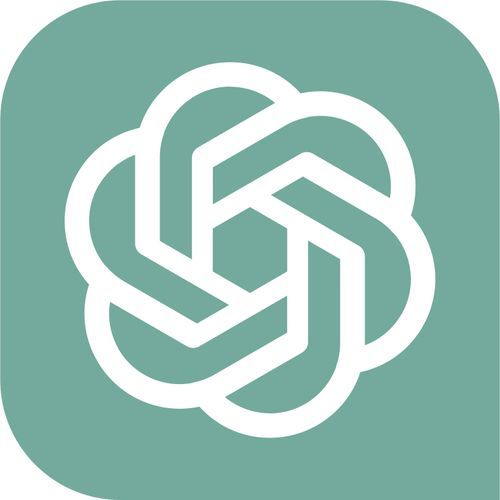Library of teambuilding games & icebreakers


Bull ring
Bull Ring is a popular game that demands teams work together on a shared goal. You will need to purchase some materials, but this is considered one of the best games to encourage cooperation and teamwork, so it’s likely worth it! Bull Ring is more involved than some previous games, which require little more than a blindfold or some markers.
Bull ring
Bull Ring is a popular game that demands teams work together on a shared goal. You will need to purchase some materials, but this is considered one of the best games to encourage cooperation and teamwork, so it’s likely worth it! Bull Ring is more involved than some previous games, which require little more than a blindfold or some markers.
How to play:
Teams must transport a small ball from one post to another using a string system with a circle in the center. The ball rests in the center, and teams must ensure it doesn’t roll off during transport from one area.
Team members must communicate consistently throughout the process, as each body movement significantly impacts the ball moving, so each individual must listen carefully and be aware at all times.
Materials you’ll need: Strings, a small ball, and two stands to mark the start and finish.
How many people: Small to large teams (8-25+ people)
Gallery



Video


Impossible tasks challenge
Employees submit “impossible” tasks, like opening a door without touching the handle or moving an object without picking it up. Teams brainstorm creative ways to solve these challenges together.For the hybrid setup, remote workers can submit their impossible tasks via text, video, or even a live challenge. The in-office team will brainstorm ideas together, while remote workers can jump in via video call or chat to contribute their own solutions. Whether you’re using random office supplies or thinking way outside the box, the goal is to come up with the most creative and doable solution. Afterward, everyone shares their quirky solutions to see which team cracked the “impossible” the best. It’s a light-hearted way to get everyone thinking and working together, wherever they are.
Impossible tasks challenge
Explanation:
Employees submit “impossible” tasks, like opening a door without touching the handle or moving an object without picking it up. Teams brainstorm creative ways to solve these challenges together.
For the hybrid setup, remote workers can submit their impossible tasks via text, video, or even a live challenge. The in-office team will brainstorm ideas together, while remote workers can jump in via video call or chat to contribute their own solutions. Whether you’re using random office supplies or thinking way outside the box, the goal is to come up with the most creative and doable solution. Afterward, everyone shares their quirky solutions to see which team cracked the “impossible” the best. It’s a light-hearted way to get everyone thinking and working together, wherever they are.
Gallery



Video


Virtual movie quiz
Test your team's movie knowledge with virtual movie quiz! Watch a short clip from a popular film, then answer trivia questions about specific details in the scene. It’s a fun way to foster attention to detail, spark discussions about shared movie favorites, and see who’s the ultimate film buff.Perfect for breaking up the workday with some friendly competition and movie talk.
Virtual movie quiz
Test your team's movie knowledge with virtual movie quiz! Watch a short clip from a popular film, then answer trivia questions about specific details in the scene. It’s a fun way to foster attention to detail, spark discussions about shared movie favorites, and see who’s the ultimate film buff.
Perfect for breaking up the workday with some friendly competition and movie talk.
How to play:
- Watch a short movie clip together as a team.
- Answer trivia questions about details in the scene (e.g., what color was the car?).
- The person with the most correct answers wins!
Gallery



Video


Conflict management skills
Every now and then, differences crop up. Conflict management skills are like the superhero toolkit to sort things out, keeping relationships smooth and stress levels low. Conflict management skills activity - "Resolution theater": Prepare several workplace conflict scenarios with varying levels of complexity. Divide participants into small groups and assign each group a scenario to act out. Instruct groups to perform a role-play where they present the conflict, pause at critical points and discuss potential resolutions. After the role-play, encourage groups to share their proposed resolutions and engage in a constructive dialogue. This interactive activity provides a safe space for practicing conflict resolution strategies, sharing insights and learning from different approaches.
Conflict management skills
Every now and then, differences crop up. Conflict management skills are like the superhero toolkit to sort things out, keeping relationships smooth and stress levels low.
Conflict management skills activity - "Resolution theater":
- Prepare several workplace conflict scenarios with varying levels of complexity.
- Divide participants into small groups and assign each group a scenario to act out.
- Instruct groups to perform a role-play where they present the conflict, pause at critical points and discuss potential resolutions.
- After the role-play, encourage groups to share their proposed resolutions and engage in a constructive dialogue.
This interactive activity provides a safe space for practicing conflict resolution strategies, sharing insights and learning from different approaches.
Gallery



Video


Coffee talk sessions
Coffee talk sessions offer a simple, relaxing break in the day. Teams hop on a virtual call for 15 minutes, grab a coffee (or tea), and chat about anything but work. It’s the virtual water cooler chat you didn’t know you needed.This is an easy way to stay connected, share stories, and unwind—especially when everyone’s remote and missing those casual office moments.
Coffee talk sessions
Coffee talk sessions offer a simple, relaxing break in the day. Teams hop on a virtual call for 15 minutes, grab a coffee (or tea), and chat about anything but work. It’s the virtual water cooler chat you didn’t know you needed.
This is an easy way to stay connected, share stories, and unwind—especially when everyone’s remote and missing those casual office moments.
How to play:
- Set up a 15-minute virtual coffee break.
- Join the call with your favorite drink and talk about anything non-work-related.
- Enjoy a casual chat and a little break from the day!
Gallery



Video


Guess the emoji board
To play guess the emoji board, you’ll need to ask each participant to send you a screenshot of their “most recent” emoji board on their phone. Once you’ve gathered all the screenshots, you can share your screen and display them one by one to the group.It’s now the participant’s job to try and guess who’s board it is based on the emojis they see. Some will be easy, while others will test your team’s powers of deduction.
Guess the emoji board
This game doesn’t take very long, but it’s a great warm-up for the beginning of your meeting. It’s a great ice-breaker, especially for teams who already know each other a little.
How to play Guess the emoji board
To play guess the emoji board, you’ll need to ask each participant to send you a screenshot of their “most recent” emoji board on their phone. Once you’ve gathered all the screenshots, you can share your screen and display them one by one to the group.
It’s now the participant’s job to try and guess who’s board it is based on the emojis they see. Some will be easy, while others will test your team’s powers of deduction.
Gallery



Video


What If?
Want to inject some energy into proceedings and trigger some silly, serious, and generally scintillating discussions at the same time? Play What If. A super straightforward question game, you simply take turns asking “what if” questions for your teammates to answer.You may find that the best discussions come from questions people make up on the fly. Nevertheless, here are some great “What If” questions to get things started:What if you could travel back in time?What if the power went out for a month?What it there was no internet anywhere in the world?What if your high-school crush contacted you out of the blue?What if you stopped drinking coffee for a week?What if a famous director asked you to star in their next movie?What if you had 24 hours left to live?
What If?
How to play What If?
Want to inject some energy into proceedings and trigger some silly, serious, and generally scintillating discussions at the same time? Play What If. A super straightforward question game, you simply take turns asking “what if” questions for your teammates to answer.
You may find that the best discussions come from questions people make up on the fly. Nevertheless, here are some great “What If” questions to get things started:
- What if you could travel back in time?
- What if the power went out for a month?
- What it there was no internet anywhere in the world?
- What if your high-school crush contacted you out of the blue?
- What if you stopped drinking coffee for a week?
- What if a famous director asked you to star in their next movie?
- What if you had 24 hours left to live?
Gallery



Video


Puzzle dash
Ready, set, puzzle! In puzzle dash, teams race against the clock to complete a jigsaw puzzle or brain teaser. The fastest team to finish wins, promoting problem-solving, quick thinking, and a bit of healthy competition.This game is perfect for sharpening your team’s focus, collaboration, and time management skills. Whether it’s a jigsaw or a tricky brain teaser, puzzle dash brings out the best in quick thinking under pressure—all while having some fun.
Puzzle dash
Ready, set, puzzle! In puzzle dash, teams race against the clock to complete a jigsaw puzzle or brain teaser. The fastest team to finish wins, promoting problem-solving, quick thinking, and a bit of healthy competition.
This game is perfect for sharpening your team’s focus, collaboration, and time management skills. Whether it’s a jigsaw or a tricky brain teaser, puzzle dash brings out the best in quick thinking under pressure—all while having some fun.
How to play:
- Divide into teams and give each team a puzzle or brain teaser (e.g., a 100-piece jigsaw or a Sudoku challenge).
- Set a time limit and race to complete it as quickly as possible.
- The team that finishes first (or makes the most progress) wins!
Gallery



Video


Outdoor Survival Race
Imagine your team venturing into the wilderness, not just for a casual hike, but for an exhilarating Outdoor Survival Race. You'll rely on each other's skills to navigate the wilds, decode puzzles, and conquer challenges. This is more than teamwork; it's about trust, communication, and strategizing under pressure. As you tackle Mother Nature's obstacles together, you'll find yourselves delegating tasks, sharing ideas, and building unbreakable bonds.
Outdoor Survival Race
Imagine your team venturing into the wilderness, not just for a casual hike, but for an exhilarating Outdoor Survival Race. You'll rely on each other's skills to navigate the wilds, decode puzzles, and conquer challenges. This is more than teamwork; it's about trust, communication, and strategizing under pressure. As you tackle Mother Nature's obstacles together, you'll find yourselves delegating tasks, sharing ideas, and building unbreakable bonds.
Instructions
- Create diverse teams for varied perspectives.
- Equip each team with maps and survival tools.
- Progress by solving puzzles at checkpoints.
- Delegate tasks based on strengths and communicate clearly.
- Prioritize safety by sharing essential survival tips before setting off.
Gallery



Video


Creative Introductions
A more fun version of “around the horn”, this exercise has everyone introduce themselves to the group, but with a twist. Give people a few moments to prepare their introduction with a unique spin. Perhaps they might compose a short poem or sing their introduction to music. Someone might choose to introduce themselves using their favorite movie character voice. Give people freedom to come up with something fun and enough time to be creative, and this is sure to be an icebreaker that people remember.
Creative Introductions
How to play Creative Introductions
A more fun version of “around the horn”, this exercise has everyone introduce themselves to the group, but with a twist. Give people a few moments to prepare their introduction with a unique spin. Perhaps they might compose a short poem or sing their introduction to music. Someone might choose to introduce themselves using their favorite movie character voice. Give people freedom to come up with something fun and enough time to be creative, and this is sure to be an icebreaker that people remember.
Gallery



Video


Phrase ball
This game is a fun and energetic game that gets the blood pumping, and its team members get to know each other in an informal way, which is essential to boosting workplace morale.
Phrase ball
This game is a fun and energetic game that gets the blood pumping, and its team members get to know each other in an informal way, which is essential to boosting workplace morale.
How to play:
Stand in a group, and the first player answers one of the written prompts on the ball after reading it aloud, so the group knows what they’re answering. After they finish, they call out the next person's name to that they will be throwing the ball (they wouldn’t want to hit an unsuspecting player in the face), and they do the same as the first player.
The game continues until everyone has a chance to answer a question.
Materials you’ll need Enough space for people to gather comfortably and throw a ball.
How many people: An icebreaker thumbnail or a DIY version can be a soccer ball with phrases written on it.
Gallery



Video


New brand manager (teams)
In this game, you can break a group of 10-20 people into smaller teams. Give each team a product (you can keep it simple by grabbing things from around the room like a pencil sharpener or a soda) and ask them to be brand manager for a day. What is the overall business plan for this product? How about marketing strategy and tactics? How are they selling this product, and to whom? This is a good activity for teams that need to improve their marketing and sales mindsets. Have each team present the plan for their brand and conduct discussions as a larger team.
New brand manager (teams)
How to play New brand manager (teams)
In this game, you can break a group of 10-20 people into smaller teams. Give each team a product (you can keep it simple by grabbing things from around the room like a pencil sharpener or a soda) and ask them to be brand manager for a day. What is the overall business plan for this product? How about marketing strategy and tactics? How are they selling this product, and to whom?
This is a good activity for teams that need to improve their marketing and sales mindsets. Have each team present the plan for their brand and conduct discussions as a larger team.
Gallery



Video


Solo pyramid
Have players stack red Solo cups in a pyramid shape without it collapsing. You can kick things up a notch by having them dismantle the stack without knocking any over, all within a minute. A one-hand requirement makes things extra tricky.
Solo pyramid
How to play Solo pyramid
Have players stack red Solo cups in a pyramid shape without it collapsing. You can kick things up a notch by having them dismantle the stack without knocking any over, all within a minute. A one-hand requirement makes things extra tricky.
Gallery



Video


Typing speed race
You would be surprised how competitive colleagues become over a typing speed race. This game is a great way to kick off the fun. The best way to play the game is for the competitors to take turns completing a typing test and sharing their screen as they do so. This way, spectators can cheer them on as they type.
Typing speed race
You would be surprised how competitive colleagues become over a typing speed race. This game is a great way to kick off the fun.
How to play typing speed race
The best way to play the game is for the competitors to take turns completing a typing test and sharing their screen as they do so. This way, spectators can cheer them on as they type.
Once they’ve completed the test, their scores are entered into a league table. Fancy upping the stakes? Encourage the team to ‘place bets’ on who they think will be the fastest before starting the competition.
Gallery



Video


Creative Puzzle Mural
The Creative Puzzle Mural challenge is a fusion of artistry and collaboration. Each team is tasked with creating a section of a larger mural, aligning colors, shapes, and themes. As you assemble the puzzle pieces, you'll uncover the beauty of unity in diversity. This activity celebrates the power of collective creativity while highlighting the importance of communication and harmonious teamwork.
Creative Puzzle Mural
The Creative Puzzle Mural challenge is a fusion of artistry and collaboration. Each team is tasked with creating a section of a larger mural, aligning colors, shapes, and themes. As you assemble the puzzle pieces, you'll uncover the beauty of unity in diversity. This activity celebrates the power of collective creativity while highlighting the importance of communication and harmonious teamwork.
Instructions
- Divide participants into teams, ensuring a mix of artistic abilities.
- Assign sections of a mural to each team, providing basic guidelines.
- Teams work collaboratively to design and paint their sections.
- Combine the pieces to reveal the complete mural artwork.
- Reflect on how the different sections symbolize teamwork and collaboration.
Gallery



Video


Faux job interviews
This is a fun game for anyone who considers themselves a smooth talker. Within your group, pair everyone off into groups of two. Have one person come up with a job, and the other person should share reasons why they are the perfect candidate in a fake interview. The sillier the job title, the more fun the responses. For example, a job might be “ice cream taster” or “dollhouse interior decorator”. Which traits does the other person have that would make them ideal for that role? This is also a fun way to learn more about your coworkers special talents and characteristics.
Faux job interviews
How to play Faux job interviews
This is a fun game for anyone who considers themselves a smooth talker. Within your group, pair everyone off into groups of two. Have one person come up with a job, and the other person should share reasons why they are the perfect candidate in a fake interview. The sillier the job title, the more fun the responses.
For example, a job might be “ice cream taster” or “dollhouse interior decorator”. Which traits does the other person have that would make them ideal for that role? This is also a fun way to learn more about your coworkers special talents and characteristics.
Gallery



Video


Bananagrams
A fast-paced board game, this is one you’ll need to purchase in advance. When you have the game in hand, distribute the letter tiles among the players. Every player will flip their tiles and start forming a crossword grid of intersecting words. Players can rearrange their grid at any time to make new words. Once a player uses all their tiles, they can shout "Peel!" and everyone has to draw an additional tile. The game goes on until there are fewer tiles than players, and the first player to use all their tiles - shouting "Bananas!" - wins the game.
Bananagrams
How to play Bananagrams
A fast-paced board game, this is one you’ll need to purchase in advance. When you have the game in hand, distribute the letter tiles among the players. Every player will flip their tiles and start forming a crossword grid of intersecting words.
Players can rearrange their grid at any time to make new words. Once a player uses all their tiles, they can shout "Peel!" and everyone has to draw an additional tile. The game goes on until there are fewer tiles than players, and the first player to use all their tiles - shouting "Bananas!" - wins the game.
Gallery



Video


Categories (similarities)
The goal of this game is to have everyone find a certain amount of things they all have in common. You can make this into a competitive icebreaker game between smaller teams or a larger group. For groups of more than 20 or so, you’ll need to break people up into smaller teams. You don’t need any supplies to set up the game, simply use a piece of paper and a writing utensil for each team to record their similarities on. Each group should talk about things they have in common and try to come up with at least 6 similarities. Things could be as simple as hair color or favorite food, or dive deeper like holding certifications or having visited a country. The first team to get to 6 commonalities wins.
Categories (similarities)
How to play Categories (similarities)
The goal of this game is to have everyone find a certain amount of things they all have in common. You can make this into a competitive icebreaker game between smaller teams or a larger group. For groups of more than 20 or so, you’ll need to break people up into smaller teams. You don’t need any supplies to set up the game, simply use a piece of paper and a writing utensil for each team to record their similarities on. Each group should talk about things they have in common and try to come up with at least 6 similarities. Things could be as simple as hair color or favorite food, or dive deeper like holding certifications or having visited a country. The first team to get to 6 commonalities wins.
Gallery



Video


Spelling bee
The spelling bee is a great opportunity for the more introverted members of your workforce to display some raw talent. A host will need to make a list of words, with increasing difficulty. Try adding in ‘bonus’ rounds where spellers will need to spell the word backwards.
Spelling bee
The spelling bee is a great opportunity for the more introverted members of your workforce to display some raw talent.
How to play Spelling bee
A host will need to make a list of words, with increasing difficulty. Try adding in ‘bonus’ rounds where spellers will need to spell the word backwards.
Gallery



Video


Lego builders
If you have enough space to spread out a bit, try some lego construction. Give everyone the same set of lego pieces, and print out brief instructions for creating a certain project. Who can complete the project in under one minute?
Lego builders
How to play Lego builders
If you have enough space to spread out a bit, try some lego construction. Give everyone the same set of lego pieces, and print out brief instructions for creating a certain project. Who can complete the project in under one minute?
Gallery



Video


Pet parade party
Bring on the cuteness with pet parade party! Team members show off their pets (or favorite stuffed toys, if they don’t have pets) in a virtual showcase. Whether it’s a dog, cat, or even a pet rock, everyone gets a turn to introduce their little (or big) buddy to the team.This is a fun, lighthearted way to bond over something everyone loves—adorable animals. Plus, who doesn’t love a chance to show off their furry friends?
Pet parade party
Bring on the cuteness with pet parade party! Team members show off their pets (or favorite stuffed toys, if they don’t have pets) in a virtual showcase. Whether it’s a dog, cat, or even a pet rock, everyone gets a turn to introduce their little (or big) buddy to the team.
This is a fun, lighthearted way to bond over something everyone loves—adorable animals. Plus, who doesn’t love a chance to show off their furry friends?
How to play:
- Each team member gets a turn to show off their pet (or stuffed toy).
- Introduce the pet and share a fun fact or story.
- Enjoy the cuteness and some laughs as you meet everyone’s pets!
Gallery



Video


Online murder mystery
Murder mystery events have become a popular team-building activity because they facilitate interaction between employees and improve teamwork and problem-solving skills.To make the experience more immersive, encourage players to dress up and gather props to match the theme of the event. Also, don’t forget to utilise the background features on zoom for added realism.
Online murder mystery
Online murder mystery events are just like their live-action counterparts, only, online! With the help of a professional third-party organiser, you can create an engaging murder mystery event for any sized group.
Murder mystery events have become a popular team-building activity because they facilitate interaction between employees and improve teamwork and problem-solving skills.
How to play Online murder mystery
To make the experience more immersive, encourage players to dress up and gather props to match the theme of the event. Also, don’t forget to utilise the background features on zoom for added realism.
Gallery



Video


“Pass the energy” circle
People love this one because it’s high-energy and good for engaging groups. Here are the steps: begin with everyone in a circle. Have a “caller” who will kick off the game by choosing a noise to make (such as “ahh” or “boom”). The person next to them must replicate the noise and it goes around the circle until it gets to the last person, who makes a new noise. Everyone should try to make the noise as fast as possible around the group. If you want to add some extra fun, try timing the exercise for each sound and seeing how fast the group can run through a single noise.
“Pass the energy” circle
How to play “Pass the energy” circle
People love this one because it’s high-energy and good for engaging groups. Here are the steps: begin with everyone in a circle. Have a “caller” who will kick off the game by choosing a noise to make (such as “ahh” or “boom”). The person next to them must replicate the noise and it goes around the circle until it gets to the last person, who makes a new noise. Everyone should try to make the noise as fast as possible around the group. If you want to add some extra fun, try timing the exercise for each sound and seeing how fast the group can run through a single noise.
Gallery



Video


Role Reversal
Role Reversal is a great team building game, giving employees the chance to swap roles with their colleagues for a select amount of time!
Role Reversal
Role Reversal is a great team building game, giving employees the chance to swap roles with their colleagues for a select amount of time!
Materials needed:
- Grab those job role descriptions for everyone.
- Dig up documentation or guides related to each role.
- Make a schedule for the big switcheroo.
Instructions on how to play:
- Before the big day, hand out the job role stuff to each team member.
- Tell everyone they're swapping roles for the day – meetings, tasks, and all.
- At the end of the day, get everyone together to spill the beans on their experiences.
Why it's a great team building game:
- Feel the feels: It helps everyone understand what their teammates go through, creating more empathy.
- Break the walls: Opens up communication by smashing those silos and getting people to talk.
- Team Power-up: Makes your team even stronger by finding new ways to work together.
Top tip to help the game run smoothly: Remind everyone it's not about finding faults but about understanding and appreciating each other. Keep an open mind, folks!
Gallery



Video

















